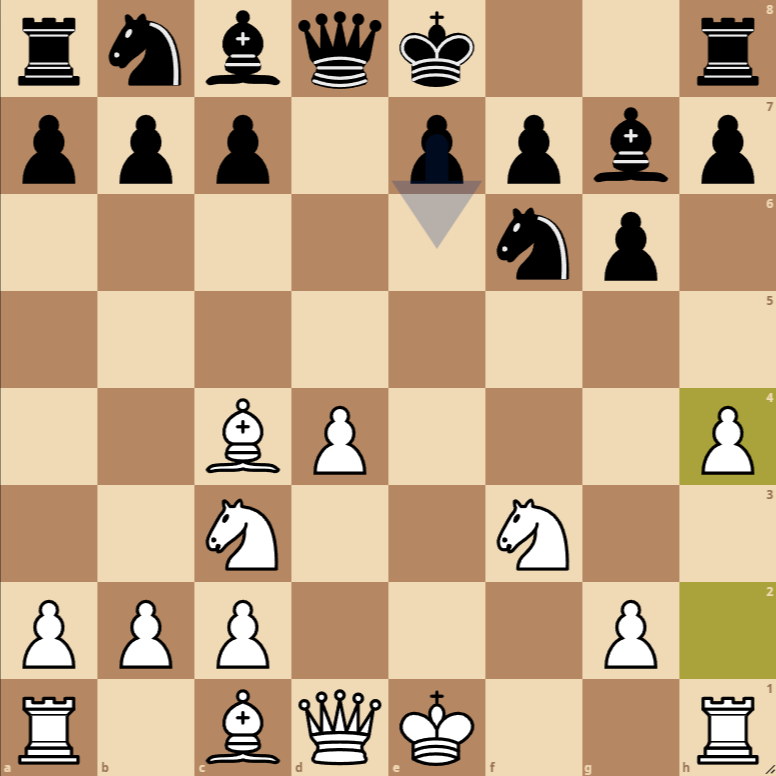How to Play the Blackmar-Diemer Gambit Accepted Bogoljubow Defense Mad Dog Attack
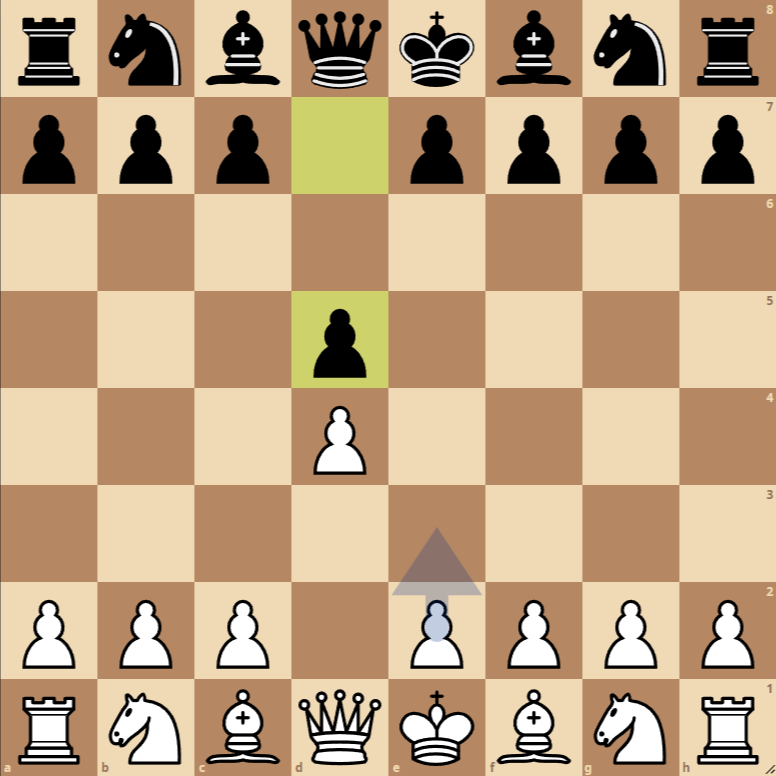
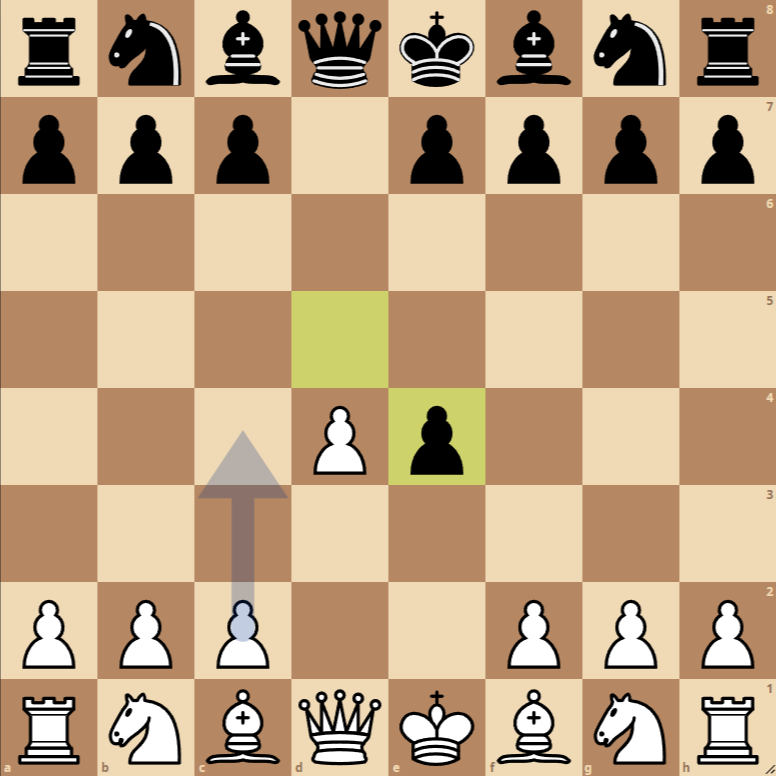
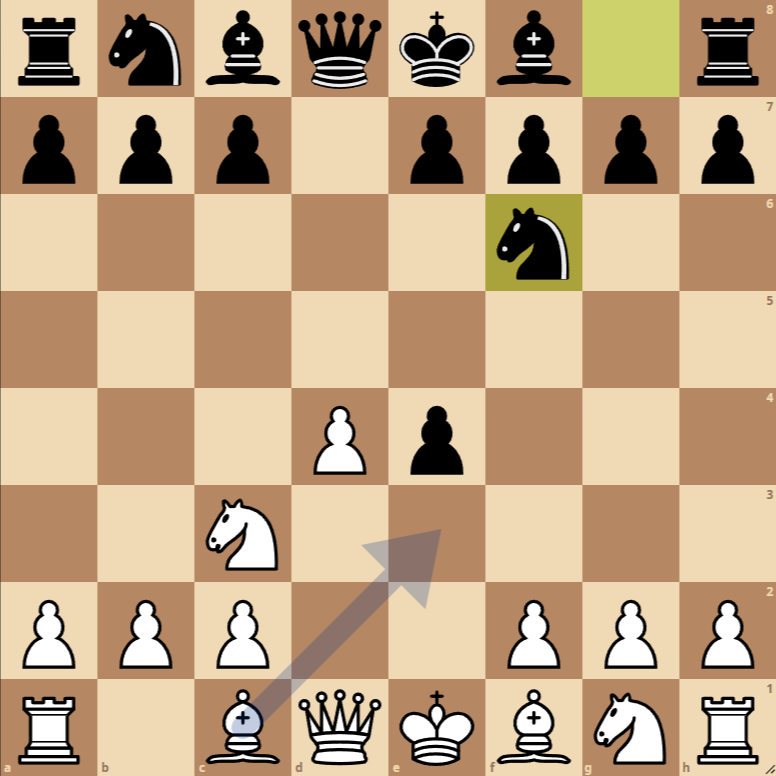
- 1. d4 d5: White initiates control of the center, and Black responds in the same manner, establishing a solid structure.
- 2. e4 dxe4: White offers a pawn to divert the Black pawn from d5 and open lines for its pieces, specifically the bishop and queen. Black accepts the gambit.
- 3. Nc3 Nf6: Development of the White knight, targeting the captured central pawn, while Black develops their knight to f6, preparing to reinforce their control of the center and respond to the threat on the e4 pawn.
- 4. f3 exf3: White sacrifices another pawn to open the f-file for their rook and queen, while Black captures this pawn, accepting the sacrifice.
- 5. Nxf3: Recovery of the pawn by the knight, increasing pressure in the center and preparing the development of minor pieces.
- 6. Bc4: Development of the White bishop, aiming at the Black king’s flank, exerting pressure on f7, a weak point in Black’s initial position.
- 7. h4: An aggressive move that prepares a possible h5 advance to attack Black’s king’s flank and open lines for White’s attack.
Variants of the Blackmar-Diemer Gambit Accepted Bogoljubow Defense Mad Dog Attack
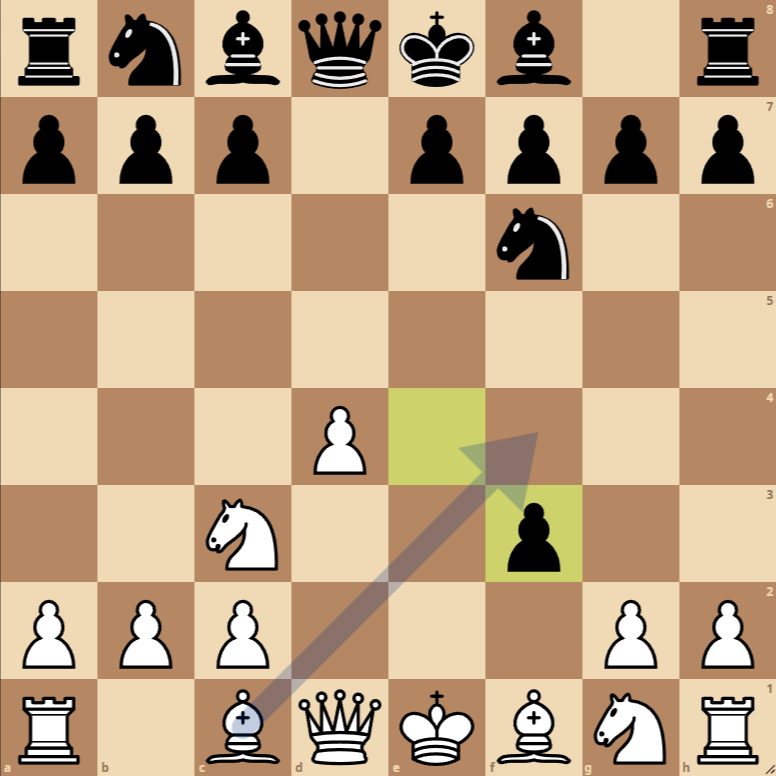
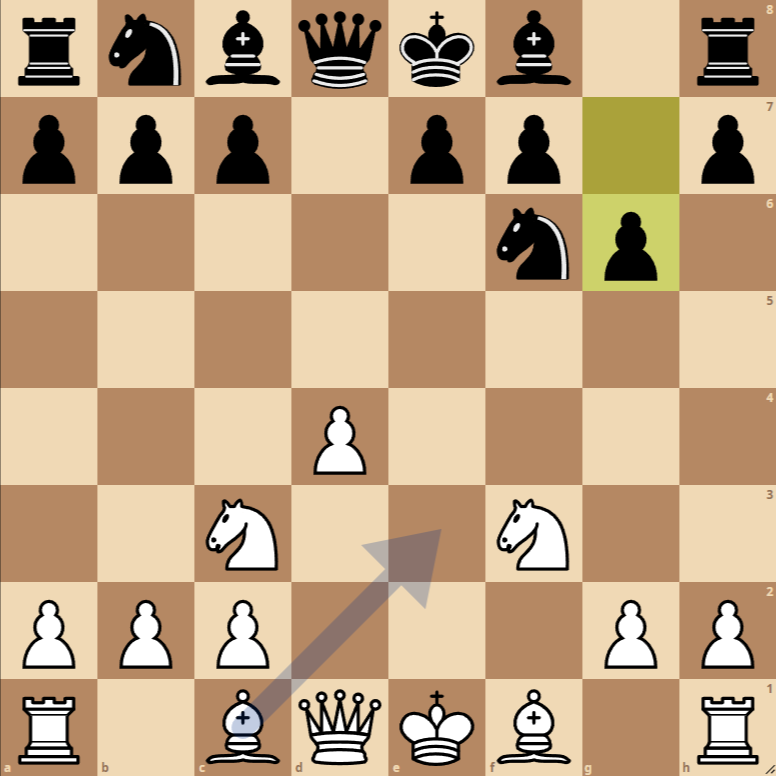
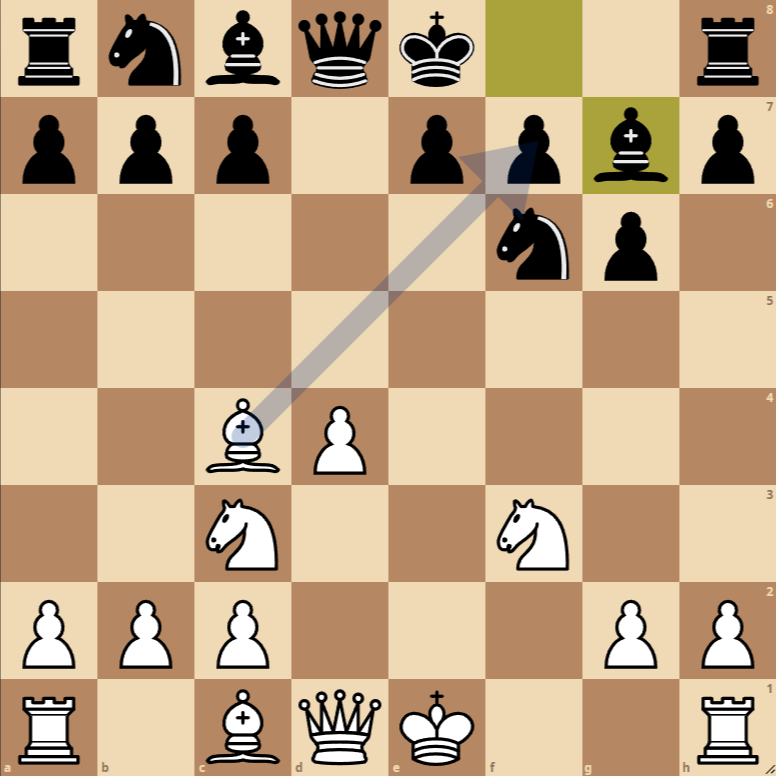
1. … e6
An alternative for Black after 1. d4 is to play e6, seeking a more closed development and preparing the pawn advance from d to d5 at a more opportune moment.
2. … c6
After 1. d4 d5, Black could opt for c6, solidifying their center and preparing the possible queen’s side expansion with b5 and a5, known as the Caro-Kann Advance.
Opening: Blackmar-Diemer Gambit (Bogoljubow Defense – Mad Dog Variation)
The current position after 7. h4 in the Blackmar-Diemer Gambit, specifically in the line of the Bogoljubow Defense, and even more specifically, in the Mad Dog Variation, represents a complex battlefield where both sides have clear strategic and tactical intentions. Let’s break down the current situation and possible continuations, focusing on O-O (short castling), h5, and Ag4 as moves to consider.
White’s Strategy
White has sacrificed a pawn early to gain a quick initiative and development. With the move 7. h4, White is clearly looking to play h5, with the goal of undermining the Black king’s fianchetto and opening lines toward the Black king. This maneuver is typical of the Mad Dog Variation, where White seeks a direct attack on the king instead of focusing on regaining sacrificed material. White’s pieces are well-developed, with the bishop on c4 exerting pressure on the Black king’s flank and the knights in strong central positions. White’s strategy focuses on maintaining pressure and seeking tactical opportunities to exploit weaknesses in the Black position.
Black’s Strategy
Black, on the other hand, has accepted the pawn offered in the gambit and managed to develop some of their pieces to natural squares. With the bishop fianchettoed on g7, Black aims to strengthen their king’s position and counter the White center. The Bogoljubow Defense chosen by Black is known for its solidity and counterattacking capabilities. Faced with the imminent threat of h5 by White, Black must act cautiously, balancing the defense of their king’s position and the creation of counterplay.
Moves to Consider
- O-O (Black’s Short Castling): This move is crucial for the safety of the Black king. By castling, Black not only secures their king but also connects the rooks, preparing for possible actions in the center or on the king’s side. It’s a move that balances safety and readiness for counterattacks.
- h5 (White’s Pawn Advance): Advancing h5 is an aggressive continuation that aims to open the Black king’s side, especially if Black has castled on that side. This move tests Black’s defenses and can lead to highly tactical positions where precise calculation is essential.
- Ag4 (Development of the Black Bishop): Placing the bishop on g4 aims to pressure the knight on f3 and potentially exchange it to disrupt the White pawn structure around their king. It’s a move that can serve both defensively and offensively, offering Black the opportunity to activate their pieces and contest central squares.
Conclusion

